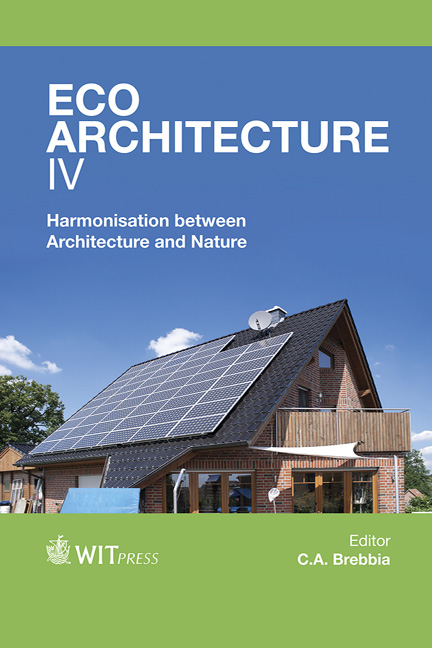The Sustainability Of Construction: Techniques And Technologies For Energy Efficiency And The Reduction Of Greenhouse Gases – Methodological Aspects
Price
Free (open access)
Transaction
Volume
165
Pages
10
Page Range
421 - 430
Published
2013
Size
331 kb
Paper DOI
10.2495/ARC120371
Copyright
WIT Press
Author(s)
S. M. Rola, E. G. Vasquez, L. F. B. Carvalho, I. C. Leite da Fonseca, M. A. Vasconcelos de Freitas & L. Pinguelli Rosa
Abstract
In order to adapt densely packed cities to climate change, there is a pressing need for the adoption of techniques that contribute to the sustainability of constructions and, therefore, of the cities themselves, so that they become more appropriate places to enable their citizens to live and work. Indeed, adopting techniques for greening built-up environments and making use of non-energyintensive construction technologies has proven to be an environmentally friendly and energetically efficient alternative, enhancing the micro-climate of adapted buildings and the meso-climate of the built up environment, creating ecologically appropriate alternatives for renewal of areas vulnerable to degradation and the expansion of sustainable newly constructed areas. In this context, with the support of the Rio de Janeiro State Research Funding Agency (FAPERJ), a practical experiment is currently underway at the Federal University of Rio de Janeiro (UFRJ) involving the application of naturation. This is a practical experiment that consists of applying vegetation to constructed surfaces using the COMPEC brick, which is comprised of organic and inorganic matter derived from solid urban waste. The aim is to evaluate energy and thermal comfort aspects by measuring the potential for energy conservation and efficiency gains when compared with conventional building materials. At present, 3 prototypes
Keywords
sustainability of constructions, naturation, non-energy-intensive materials, reduction of greenhouse gas emissions (“GGEs”)





